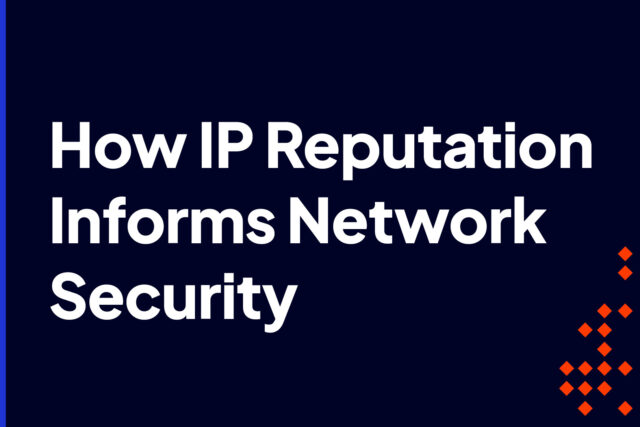
Outbound Traffic Risks in your AWS Cloud Network
As organizations move more of their operations to AWS, one foundational question keeps coming up: How secure is my data in the cloud?
It’s a fair question, especially when 23% of all recent data breaches involve data stored in the public cloud. More so because those data breaches are the most expensive, costing an average of $5.17 million.
The problem isn’t always a lack of cloud security investment. Most teams already have more tools than they can manage. The real issue is coverage. Gaps. Blind spots between products where attackers slip through.
In AWS, you might have Cloud Security Posture Management (CSPM) catching misconfigurations, firewalls filtering inbound traffic, and GuardDuty scanning logs. But what happens in the spaces those tools don’t cover?
While AWS does have several security controls in place, there’s a critical area that’s often overlooked despite sitting in plain sight: outbound traffic.
The Blind Spot: Outbound Traffic
When most people think about cloud security, they imagine keeping attackers out of their cloud environments.
AWS has invested heavily in tools designed for that purpose:
- Security Groups to limit what can reach your workloads.
- AWS Network Firewall to inspect and control traffic moving through your VPC.
- IAM policies to control who can log in and what they can access.
The problem is that most of these defenses are typically set up with an inbound bias. They’re usually configured to focus on keeping threats from breaking in, not on preventing compromised workloads from calling out or sensitive data from being exfiltrated.
Outbound traffic is often overlooked. Not because it’s invisible, but because it’s perceived as “safe.” After all, why would outbound connections be dangerous if you trust what’s inside? This assumption creates a dangerous blind spot.
The Threat Model: How Attackers Exploit Outbound Paths
Once they’ve gained a foothold in your cloud environment, adversaries rely on outbound paths to establish C2 communications, retrieve additional payloads to expand the attack, and exfiltrate data.
Command-and-Control (C2) Callbacks
Once malware lands on an EC2 instance, container, or Lambda function, it needs a way to “phone home.” These callbacks blend into ordinary outbound protocols like DNS queries or HTTPS requests, making them nearly invisible to traditional monitoring.
Follow-on Payload Requests
After establishing persistence, attackers often use HTTPS or DNS to fetch additional tools, modules, or ransomware payloads. These follow-on requests expand their capabilities, enabling privilege escalation, lateral movement, or data destruction, while blending seamlessly with legitimate web traffic.
Data Exfiltration
Sensitive files are quietly collected and sent out of the environment using common services or encrypted channels. Because these outbound transmissions look like everyday data transfers (again, via HTTPS, DNS, SMB, SFTP), they can slip past signature-based defenses.
Outbound traffic is trusted by default. Security tools often assume that if something is already leaving, it must be legitimate. This is exactly why attackers exploit it.
Why Traditional Monitoring Falls Short in AWS
Besides shortcomings in dealing with outbound traffic, organizations face broader monitoring gaps that leave attackers room to maneuver.
Log-based detection creates lag
AWS services like CloudTrail and VPC Flow Logs are powerful, but they’re reactive. By the time an analyst sees suspicious activity, your data may already be gone. Piling on more monitoring tools only worsens alert fatigue and delays remediation.
EDR/XDR coverage is incomplete
Endpoint and extended detection solutions can help, but they rarely reach ephemeral workloads like Lambda functions or containerized tasks that spin up and down in seconds. This leaves entire classes of workloads off their radar.
Noise overwhelms enforcement
Cloud security practitioners end up sifting through alerts diluted by false positives, without the ability to enforce controls in real time. What’s flagged as “suspicious” often lingers unfixed while attackers quietly exploit the vulnerability.
Encrypted traffic hides abuse
Adversaries frequently tunnel C2 communications through trusted, encrypted, or commonly used protocols, including HTTPS, DNS, and even modern SMB. To traditional monitoring, this traffic looks like business as usual.
A better monitoring option
Traditional monitoring leaves defenders buried in alerts and still blind to the most dangerous behaviors. What’s missing isn’t more logs or more tools. Rather, it’s a way to see traffic in context, even when attackers are hiding inside encrypted channels or commonly used protocols.
This is where network flow becomes invaluable. By shifting focus from what packets contain to how connections behave, flow analysis cuts through the noise and highlights activity that doesn’t fit the norm.
The Network Flow Approach in AWS
Looking at network flow is a lot like watching traffic on a highway. On the surface, the strategy of catching a bad actor might seem straightforward. In practice, though, it’s far from simple. Most cars look fine at a glance. Moreover, the color, make, and model don’t tell you much.
What really matters is the behavior. For example, a car merging onto the highway in the wrong direction, a van looping past the same intersection again and again, or a truck suddenly showing up in neighborhoods it’s never been before. When normal vehicles start doing unusual things, they require further scrutiny.
And that’s exactly how network flow works in AWS. Instead of focusing on packet contents, flow analysis reveals patterns of behavior. Which workloads are talking to which hosts? How often? Do those connections fit expected norms?
In practice, this means:
- Encrypted traffic doesn’t hide behavior. Even if payloads are unreadable, flow metadata (e.g., source/destination, ports, timestamps) still shows who’s talking to whom, and how often.
- Ephemeral workloads leave footprints. Lambda functions or containerized tasks may exist for only seconds, but their network flows provide lasting visibility into where they connected.
- Outliers stand out quickly. An EC2 instance regularly querying AWS APIs is expected. The same instance beaconing every 30 seconds to a never-before-seen domain is not.
Because attackers often blend their traffic into “normal” protocols like HTTPS and DNS, signature-based tools and log analysis struggle to tell friend from foe. Flow analysis adds the missing context. It helps practitioners see not just what the traffic looks like, but whether it belongs.
Combine that with Autonomous Network Enforcement
If network flow provides the visibility, autonomous network enforcement (ANE) provides the muscle. The challenge in AWS isn’t just spotting suspicious behavior. It’s also acting on it before attackers can do damage. Today, most teams still rely on a “watch and wait” model. Tools raise alerts, analysts triage them, and only then does remediation happen.
By that time, your data may have already been exfiltrated.
Autonomous network enforcement flips that model on its head. Instead of waiting for human intervention, it evaluates outbound connections in real time and enforces trust decisions automatically.
This approach combines three critical ingredients:
- Network flow visibility – passively collected telemetry about who talks to whom, when, and how often.
- Reputation intelligence – decades of global historical data on domains, IPs, ASNs, and TLDs associated with normal processes or malicious actions.
- Behavioral context/analysis – spotting anomalies based on traffic patterns (e.g., abnormal frequency, destinations, timing).
Together, these create a self-adjusting system that blocks malicious connections the moment they appear.
For practitioners, the benefits are immediate:
- Fewer alerts, more action. Instead of drowning in noise, teams see fewer but higher-confidence events.
- Proactive containment. Outbound threats are blocked instantly, preventing data loss or malware spread.
- Compliance wins. Enforcing trust at the network layer provides concrete proof that data exfiltration protections are active, not just theoretical.
A CSPM might tell you, “You have a weak lock on this door.” An autonomous network enforcement tool would say, “An intruder is about to walk through that door, and I just slammed it shut.”
Intrusion Shield for AWS
If you’re tired of babysitting your firewall, or are just using the basic security tools, it’s time to upgrade to autonomous network enforcement. Intrusion Shield for AWS uses 30+ years of threat intelligence to auto-generate rules, block risky traffic, and cut down alert noise. Click here to learn more.


